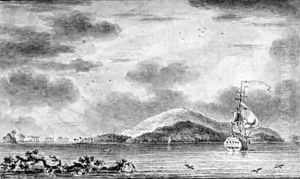Nicolas-Marie Ozanne Paintings
Nicolas-Marie Ozanne, born in 1728 in Brest, France, emerged as a distinguished French artist and engraver, renowned for his maritime and architectural works. His contributions to the art world are particularly valued for their meticulous depiction of naval architecture and maritime scenes, reflecting the Enlightenment's quest for knowledge and the era's fascination with scientific exploration. Ozanne's work serves as a critical historical document of 18th-century naval and architectural advancements.
Coming from a family closely connected to the sea and naval engineering, Ozanne's early life was steeped in the maritime culture of Brest, a major French naval port. This environment profoundly influenced his artistic direction, leading him to specialize in scenes that capture the intricacy and grandeur of naval vessels and maritime life. His education and training in art, though not documented in great detail, were likely influenced by his familial connections and the artistic milieu of his time, guiding him towards his future as a maritime artist.
Throughout his career, Ozanne produced a significant body of work that includes detailed engravings and drawings of ships, harbors, and sea battles, along with architectural plans and views. His ability to accurately depict the technical details of ships and their rigging, combined with an artistic flair, made his works highly sought after by naval architects, historians, and art collectors alike. Ozanne's engravings were not only appreciated for their aesthetic value but also for their utility in advancing the study of naval engineering and architecture.
Nicolas-Marie Ozanne's contributions extended beyond his artistic output. He was involved in the intellectual and cultural circles of his time, contributing to the dissemination of knowledge about naval architecture and maritime exploration. His works were published in several important collections and treatises on naval construction and ship design, making significant contributions to the field.
Ozanne lived through a tumultuous period in French history, witnessing the decline of the Ancien Régime, the French Revolution, and the rise of Napoleon. Despite the upheavals of his time, he continued to produce works that were celebrated for their precision and beauty. Nicolas-Marie Ozanne passed away in 1811, leaving behind a legacy that endures in maritime and art history circles. His detailed records of 18th-century naval architecture and maritime scenes remain invaluable resources for historians and provide a window into the maritime culture of his era.
